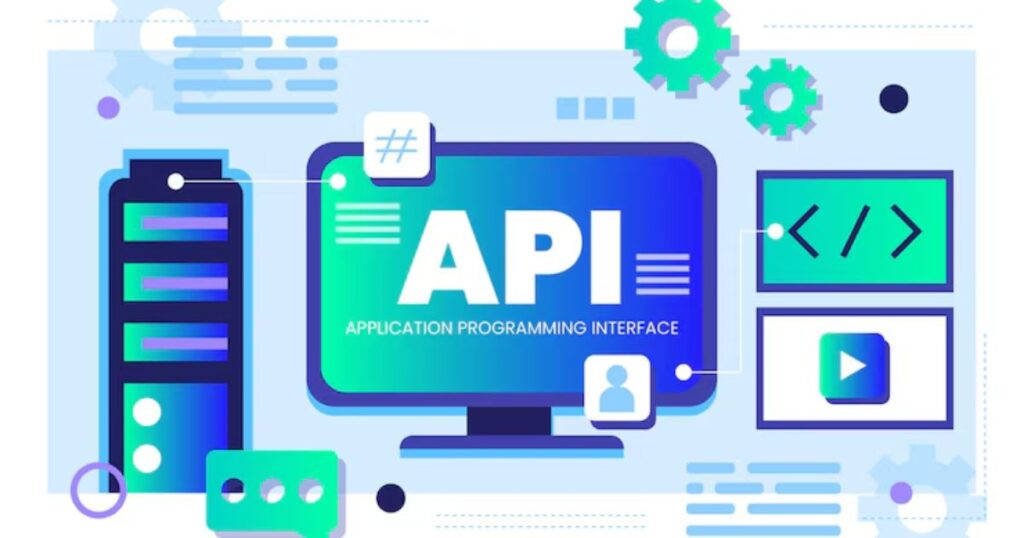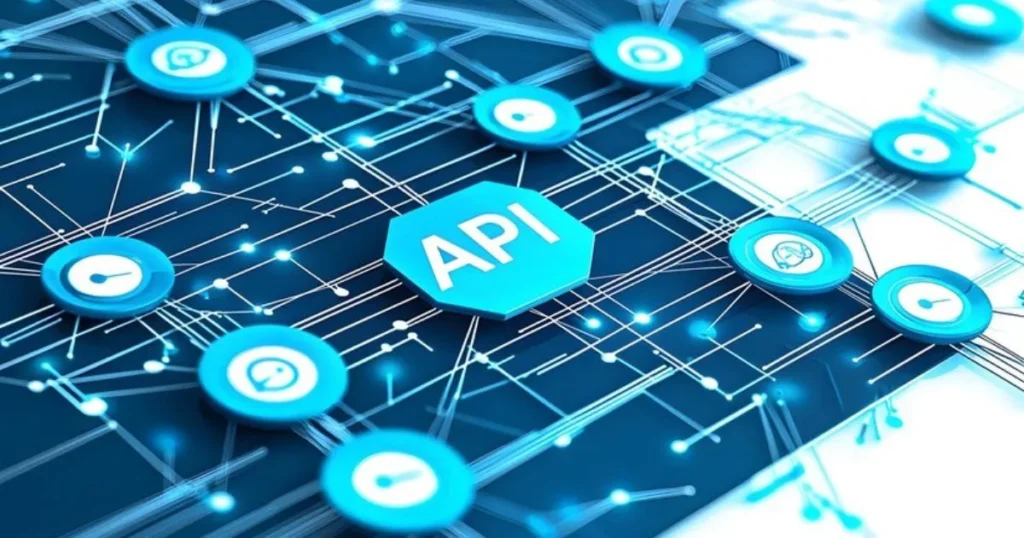Ever felt lost in the maze of API development? You’re not alone. Many developers struggle to create APIs that truly hit the mark. But here’s the secret sauce: wireframing and modeling. These two powerhouses can turn your API from meh to amazing. Let’s dive in and see how they can supercharge your next project.
What is API Wireframing?
Picture this: you’re building a house. You wouldn’t start hammering away without a blueprint, right? That’s what API wireframing is all about. It’s your API’s blueprint, showing you the big picture before you dive into the nitty-gritty.
API wireframing is like sketching out your API’s skeleton. You map out endpoints, visualize data flows, and get a bird’s-eye view of your API’s structure. It’s not about perfect pixels or fancy designs. It’s about nailing down the basics so you don’t get lost in the weeds later.
Think of it as a roadmap for your API journey. It helps you spot potential roadblocks before you hit them head-on. And trust me, it’s a lot easier to erase a line on a wireframe than to rewrite chunks of code.
Benefits of API Wireframing
Ever tried explaining your brilliant API idea to a non-tech friend? Cue the confused looks, right? That’s where wireframing shines. It turns your abstract ideas into something everyone can grasp.
Wireframing isn’t just about pretty pictures. It’s a communication powerhouse. It bridges the gap between tech geeks and business folks, making sure everyone’s on the same page. No more “I thought you meant…” moments halfway through development.
But wait, there’s more! Wireframing is like a crystal ball for your API. It helps you spot potential issues early on. Think scalability headaches or security blind spots. Catching these early can save you tons of time and headaches down the road.
And let’s talk teamwork. Wireframing gets everyone involved from the get-go. Developers, designers, project managers – they all have a say. It’s like a brainstorming session on steroids, where everyone can contribute and spot potential hiccups.
API Modeling: An Overview
Now, let’s level up from wireframing to API modeling. If wireframing is sketching, modeling is like creating a detailed 3D render. It’s where you start adding meat to the bones of your API design.
API modeling dives deep into the nuts and bolts of your API. You’re defining data structures, mapping out relationships between different parts of your API, and really getting into the technical nitty-gritty.
This is where you start thinking about things like authentication methods, encryption standards, and how different API operations (GET, POST, PUT, DELETE) will actually work. It’s the difference between saying “we need a login system” and actually mapping out how that system will function.
Key Components of API Models

Let’s break down the key players in your API model. First up, we’ve got entities. These are the main objects your API deals with. Think users, products, orders – the big pieces of your API puzzle.
Then there’s relationships. How do these entities play together? Can a user have multiple orders? Can a product belong to different categories? Mapping these out is crucial for a smooth-running API.
Don’t forget about endpoints. These are the doors to your API’s functionality. Each endpoint is like a specific address where users can interact with your API. Get the product list? There’s an endpoint for that. Update user info? Another endpoint.
And let’s not sidestep security. In your model, you need to bake in things like authentication methods and encryption standards. It’s like adding locks and alarm systems to your API house. Better safe than sorry, right?
The Synergy Between Wireframing and Modeling
Here’s where the magic happens. Wireframing and modeling aren’t solo acts – they’re a dynamic duo. Think of wireframing as drawing the map, and modeling as planning the journey.
Your wireframe gives you the big picture – the overall structure and flow of your API. It’s like looking at a city from a helicopter. Then, modeling zooms in, letting you plan out each street and building in detail.
This tag-team approach helps you catch issues early. Maybe your wireframe looks great, but when you start modeling, you realize some endpoints are redundant. Or perhaps the data flow you sketched out isn’t as efficient as you thought. Catching these early saves tons of time and headaches.
Steps to Create an Effective API Wireframe
Ready to start wireframing? Let’s break it down. First, gather your troops. Get everyone involved – developers, designers, product managers. More eyes mean fewer missed details.
Start with the basics. What’s your API supposed to do? Who’s going to use it? Jot down these core requirements. It’s like making a shopping list before you hit the grocery store.
Now, grab some paper or fire up a wireframing tool. Start sketching out your main endpoints. Don’t worry about perfection – this is all about ideas flowing freely.
As you sketch, think about user journeys. How will people actually use your API? This helps you spot gaps or unnecessary complications in your design.
Remember, keep it simple at this stage. You’re aiming for clarity, not complexity. You can always add more details later.
Steps to Build a Robust API Model
Time to get into the nitty-gritty. Start by revisiting your wireframe. It’s your blueprint for the modeling phase.
Now, dive into the details of each endpoint. What data will it handle? What operations (GET, POST, PUT, DELETE) will it support? This is where you start to see your API come to life.
Don’t forget about data structures. How will information be organized within your API? This is crucial for efficiency and scalability.
Security comes next. Plan out your authentication methods and data protection strategies. It’s like designing the locks and alarm system for your API house.
Finally, think about error handling. How will your API respond when things go wrong? Good error handling can make or break the user experience.
Tools and Software for API Wireframing

Let’s talk tools. There’s a bunch out there, but here are some fan favorites:
Balsamiq: It’s like sketching on steroids. Great for quick, rough wireframes.
Lucidchart: More detailed and great for collaborative work. Perfect if your team’s spread out.
Figma: Originally for UI design, but works great for API wireframing too. Plus, it’s web-based, so no install needed.
When picking a tool, think about your team’s needs. Do you need real-time collaboration? How about integration with other tools you use? Choose wisely – the right tool can make wireframing a breeze.
Tools and Software for API Modeling
Now, for the modeling phase, you’ve got some heavy hitters:
Swagger: The big name in API modeling. It’s comprehensive and widely used.
Postman: Great for testing your API as you model it. It’s like a Swiss Army knife for API development.
API Blueprint: If you like keeping things simple and text-based, this one’s for you.
Remember, the best tool is the one that fits your workflow. Try a few out and see what clicks with your team.
Common Challenges in API Wireframing and Modeling
Let’s get real – it’s not all smooth sailing. One common headache? Keeping everyone on the same page. Developers, designers, managers – they all speak different languages. Your wireframe and model need to bridge these gaps.
Another tricky bit? Balancing detail and flexibility. Go too detailed, and you might box yourself in. Too vague, and you’re not really helping anyone. It’s a tightrope walk.
And let’s not forget about scope creep. It’s tempting to add “just one more feature” to your wireframe or model. But before you know it, your simple API has turned into a monster. Stay focused on your core goals.
Read Also: Revo Technologies: Pioneering Innovation and Sustainability in Murray, Utah
Case Studies: Successful API Development Using Wireframing and Modeling
Let’s look at some real-world wins. Take Stripe, for example. Their API is praised for its simplicity and ease of use. How’d they do it? Rigorous wireframing and modeling. They mapped out user journeys meticulously, ensuring every endpoint served a clear purpose.
Or consider Twilio. They used detailed modeling to create an API that’s both powerful and flexible. By thoroughly mapping out their data structures and relationships, they built an API that developers love to work with.
These success stories show that time spent on wireframing and modeling isn’t just busy work – it’s the foundation of a great API.
Best Practices for API Wireframing and Modeling

Here’s the secret sauce for nailing your API design:
Start early, iterate often. Your first wireframe or model won’t be perfect, and that’s okay. The magic happens in the revisions.
Keep it simple. It’s tempting to add every bell and whistle, but remember – the best APIs are often the simplest.
Think like a user. Always ask yourself: “How will someone actually use this API?” It keeps you focused on what really matters.
Document as you go. Future you (and your team) will thank you for clear, thorough documentation.
Get feedback early and often. Fresh eyes can spot issues you might miss.
Integrating Security in API Design
Let’s face it – security isn’t just a buzzword, it’s a must-have. When you’re wireframing and modeling your API, security should be front and center.
Think of security as the locks on your API’s doors. You wouldn’t build a house without locks, right? Same goes for your API.
Start by mapping out authentication methods in your wireframe. OAuth? API keys? Decide early and bake it into your design.
When modeling, dive deeper. Think about encryption standards for data in transit and at rest. Consider rate limiting to prevent abuse. These aren’t afterthoughts – they’re core components of a robust API.
Remember, a secure API is a trustworthy API. And trust? That’s gold in the tech world.
Scalability Considerations in API Design
Here’s a scenario: Your API is a hit. Traffic is booming. Awesome, right? Not if your API buckles under the pressure.
Scalability isn’t just about handling more requests. It’s about growing smartly. When wireframing, think modular. Can your API structure handle new features without a complete overhaul?
In your model, consider things like caching strategies and database optimizations. These might seem like backend concerns, but they start with good API design.
And don’t forget about versioning. How will your API evolve without breaking existing integrations? Plan for it now, thank yourself later.
The Role of Documentation in API Success
Documentation: the unsung hero of API development. It’s not just about explaining how to use your API. Good docs can make or break adoption rates.
Start documenting during the wireframing phase. Jot down the purpose of each endpoint, the expected inputs and outputs. It’s like creating a user manual as you build.
When modeling, get into the nitty-gritty. Detail request and response formats, error codes, rate limits. The more thorough, the better.
Consider tools like Swagger UI or Redoc. They can turn your API specs into interactive documentation. It’s like giving developers a playground to test your API.
Remember, the best API in the world is useless if no one knows how to use it. Great documentation bridges that gap.
Testing Strategies for API Reliability

Testing isn’t a final step – it’s an ongoing process. And it starts way back in the wireframing stage.
As you wireframe, think about test cases. What are the critical paths through your API? What edge cases might pop up? Jot these down – they’re gold for your QA team.
When modeling, get more specific. Plan unit tests for individual endpoints. Consider integration tests for how different parts of your API work together.
Don’t forget about performance testing. How does your API handle under load? Tools like Apache JMeter or Gatling can simulate heavy traffic.
And here’s a pro tip: consider test-driven development (TDD). Write tests before you code. It keeps you focused and ensures every feature is testable.
API Governance and Standards
Let’s talk governance. It’s not the sexiest topic, but it’s crucial for API success, especially in larger organizations.
When wireframing, consider your organization’s API standards. Are there naming conventions you need to follow? Specific patterns for endpoint structure?
In the modeling phase, dig into data standards. How should dates be formatted? What about currencies or units of measurement? Consistency across APIs makes life easier for everyone.
Think about versioning policies too. How will you handle breaking changes? A clear versioning strategy, decided early, can save headaches down the road.
Remember, good governance isn’t about stifling creativity. It’s about creating a consistent, reliable experience across all your APIs.
The Impact of Good API Design on Developer Experience
Let’s get real – your API’s success hinges on one thing: developer experience. If devs love using your API, you’re golden.
When wireframing, put yourself in a developer’s shoes. Is the structure intuitive? Can someone guess what an endpoint does just by looking at it?
In modeling, think about consistency. Are your data structures logical? Do similar operations work in similar ways across different endpoints?
Consider providing SDKs or code libraries. They can dramatically speed up integration time. Plan for these during the design phase – it’ll influence how you structure your API.
And don’t underestimate the power of good error messages. Clear, actionable error responses can save developers hours of head-scratching.
Remember, a great developer experience isn’t just nice to have – it’s a competitive advantage.
Monitoring and Analytics for API Performance
Your API is live. Now what? This is where monitoring and analytics come into play.
When wireframing, think about what metrics you’ll need to track. API calls per second? Response times? Error rates? Planning for these early helps you design a more observable API.
In the modeling phase, consider how you’ll implement logging. What information will you need for troubleshooting? For usage analysis?
Tools like Prometheus or Grafana can turn your API metrics into actionable insights. Plan for integration with these kinds of tools from the start.
And don’t forget about alerting. What conditions should trigger notifications to your team? A well-monitored API can head off problems before users even notice.
The Future of API Design: Emerging Trends

The API world isn’t standing still. Here’s what’s coming down the pike:
AI-assisted design: Imagine AI helping you spot potential issues in your wireframe or suggesting optimizations in your model.
GraphQL and flexible endpoints: APIs are getting more adaptable, letting users request exactly the data they need.
Microservices architecture: As apps get more complex, APIs are breaking down into smaller, more specialized services.
Real-time capabilities: With technologies like WebSockets, APIs are moving beyond request-response to real-time data streams.
Staying ahead of these trends can give your API a real edge. Keep learning, keep experimenting, and you’ll be set for success.
Read Also: Fintechzoom GME Stock 0% 10K Vol: Understanding GameStop’s Market Dynamics
FAQ’s
What is the difference between API wireframing and API modeling?
API wireframing is like sketching. It’s high-level and focuses on structure. API modeling goes deeper. It details data structures and operations. Wireframing is about the ‘what’. Modeling is about the ‘how’.
Why are wireframing and modeling crucial for API success?
They catch issues early. This saves time and money. They improve communication between team members and stakeholders. They ensure the API aligns with business goals and user needs. They help create more user-friendly and efficient APIs.
How do these practices impact API scalability?
They help identify potential bottlenecks early. They allow for planning modular, easily extendable structures. They facilitate thinking about future growth during initial design. They enable better resource allocation and performance optimization.
What tools are recommended for beginners?
For wireframing: Balsamiq or Lucidchart. They’re user-friendly.
For modeling: Swagger or Postman. They offer good documentation.
Start simple. Focus on learning the process, not just the tools.
How often should API wireframes and models be updated?
Update them whenever requirements change. This keeps them relevant. Review them at least quarterly. This ensures they align with current needs. Update before major version releases. This helps plan new features effectively. Consider them living documents. Regular updates prevent design drift.
Conclusion
Hey there! Let’s break down this whole API wireframing and modeling thing.
Think of it like planning a road trip. Wireframing is your map, showing the big picture. Modeling? That’s plotting out each stop along the way.
These two buddies help you spot trouble before you hit the road. They keep everyone on the same page and make sure your API doesn’t fall apart when it gets popular.
For the newbies, tools like Balsamiq and Swagger are great starting points.
Remember, this isn’t a one-and-done deal. Keep tweaking as you go. Your API will thank you, and so will the developers using it.
Happy API building!



